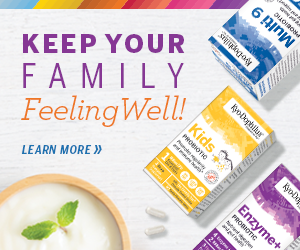
You’re eating healthy meals and snacks and exercising regularly, so why isn’t the extra weight coming off faster? Your portion sizes might be the reason, even if your diet is healthy. Yes, you can have too much of a good thing. Monitoring your portion sizes can help you lose weight without having to monitor calories and fat. Researchers at the University of North Carolina determined that our average energy (calorie) intake increased by 571 calories since 1977 and are suggesting that larger portion sizes are the cause!
Serving size vs. Portion size
Serving size and portion size is not the same thing. The recommended serving size, as well as the number of servings from each food group depends on your gender, age and most importantly, your level of physical activity. A portion, on the other hand, is the amount of food you actually eat. You might be surprised to discover that your portion sizes are significantly greater (or smaller) than the serving sizes suggested for a particular food.
For example, the serving size for Haagen-Dazs Chocolate Ice Cream is half a cup, which provides 260 calories and 17 grams of fat. If you aren’t paying attention, you could easily fill a cone or bowl with a cup or more of ice cream, meaning that your portion packs 34 grams of fat and over 500 calories (that’s almost the entire day’s ‘fat quota’). Cereal is another food that most people don’t measure but is easy to miscalculate. It’s important to look at the portion size listed on a cereal box, since portions can range from a quarter cup to a full cup.
Read more about why people overeat
Strategies for reducing portion sizes
To get control over your portion sizes, you may need to weigh and measure your food using measuring cups and a kitchen scale.
Never eat out of the package: This is a sure fire way to overeat. Trail mix can be a very healthy snack, but eating it out of the bag could mean swallowing thousands of calories. Instead, measure quarter-cup portions into snack-size Ziplock bags or containers (and don’t snack while you’re preparing them!). Do the same for other snacks that you’re tempted to eat out of the package (potato or corn chips, crackers, popcorn, etc.).
Use a smaller plate: We eat with our eyes as well as our mouths. Appetite is largely influenced by appearances. If you perceive that your plate is empty, you will still be hungry after eating. A large dinner plate might appear empty if it isn’t full, and if it’s full, chances are it contains more than you need. Instead, fill up an appetizer plate, or use a child’s plate. Fill it up, and if you’re still full after eating, go for seconds.
Use measuring cups: Your eyes can deceive you. It’s easy to underestimate how much food is on your plate, especially if you’re eating from a large dish. Use a measuring cup (or spoons) to calculate exact portions. This is especially important for cereal, cooked pasta, and cooked rice.
Containers make great measuring tools: When pro-volleyball player, Jason Trepanier, had to drop some weight during training, he came up with “The Blue Bowl Diet”. He explains that a bowl he found in his kitchen was “just the right portion size, so that whatever amount of food fit into it satisfied me but wouldn’t make me feel too full.” Use resuable glass containers containers or buy yourself a fun dish that’s the right size for most meals (or snacks).
Slow down: It takes twenty minutes for your stomach to signal your brain that you are no longer hungry. You can pack away a lot of food within twenty minutes, so eat slowly, chewing each and every bite carefully.
Pack up leftovers before sitting down to eat: If extra food isn’t sitting on top of the stove or on the counter, you won’t be tempted to eat it while cleaning up after dinner.
Don’t have your tools handy?
Eyeball the correct portion sizes with these handy guidelines:
- One serving of meat & fish (about 3 oz.) is equivalent to the size of your palm or a deck of cards
- Half a cup of cooked pasta or rice is about the size of your fist, or the amount that (comfortably!) fits into a cupcake wrapper
- 1 ounce of cheese is approximately the size of a pair of dice or your thumb
- One pancake is about the size of a compact disc
- One ounce of nuts, half a cup of potato chips, popcorn or crackers is about one handful
- Two tablespoons of peanut butter (or any nut butter) is about the size of a ping-pong ball
Read more about healthy snack that won't expand your waistline
Don’t worry too much about measuring raw or cooked vegetables (in fact, the more the better), unless they’re swimming in a fat-laden sauce, of course. Fruit, however, should be limited to three whole fruits a day because of fruit's high fructose (sugar) content.
Image: bradleypjohnson




